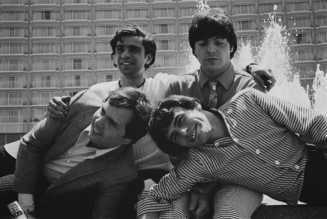Heritage
Kofia za vito: Lamu’s Sh45,000 hat for the civilised
Wednesday March 29 2023
Abdulqadir Omar Banyenye is one of the artists in Lamu who intricately hand-stitch the jewelled hats. FILE PHOTO | KALUME KAZUNGU | NMG
The art of making jewelled hats, commonly known as kofia za vito, dates back over 200 years ago and it is passed through lineages.
At the Lamu Archipelago, the craft is still alive since its inception in 1739.
They are not cheap as many may imagine. The price ranges from Sh8,000 to Sh45,000.
Abdulqadir Omar Banyenye is one of the artists in Lamu who intricately hand-stitched the hats. It takes not less than two to three months to make one hat.
“They are expensive because the hat-making process involves various stages, each with a different designer. You start by identifying a plain cloth, be it white, brown, or any other colour that the client prefers. The plain cloth is called Mshadhari. In each of the stages and designers, or artistic skills involved, they attract a payment,” he says.
Another reason why jewelled hats are expensive is their longevity.
Musa Ismael, another specialist in kofia za vito in Lamu explains that one can use a single kofia za vito for almost 15 to 20 years.
The usage lifespan, however, depends on their maintenance.
Mr Ismael says that once worn, jewelled hats get dirty on the lower part. When washing, therefore, one needs to turn it inside out.
“But don’t use any water. Well, or borehole water is prohibited since it spoils the hat. Use tap water or mineral water. So, you wash it in a civilised manner by soaking it in water and shampoo for five to six hours or even a whole day,” says Mr Ismael.
“You don’t wash the hat the same way you wash clothes. It’s not supposed to be dried under the direct sun but rather, put on a plate and under a shade for drying. Washing these hats is a whole art that requires time and keenness,” says Mr Ismael.
Read: Kiti cha Enzi: Lamu’s power seat with a 500-year-old history
With Lamu Old Town standing as the oldest surviving town in East Africa and the only Swahili settlement to retain its original character since its inception, the jewelled hats continue to be valued in the archipelago.
In Lamu, kofia za vito is sewn on specific islands across the Lamu archipelago. They include Pate, Siyu, Kizingitini, Shela, Matondoni, Tchundwa, Rasini, and Ndau.
Ahmed Athman, an elder in Pate Island says 22 inches is the maximum size of jewelled hats worn by most people.
Mr Athman, however, adds that some people wear sizes 23 and 24 inches.
“Size 24 inches is worn by very few individuals along the Coastal region and worldwide,” observes Mr Athman.
According to Salim Alwy, a historian in Lamu Old Town, during the olden days, there existed kofia za vito known as makorija, kofia za Kazi, and barobaro, all of which were sewn but unlike today, were not as appealing.
Jewelled hat, commonly known as kofia ya vito. FILE PHOTO | KALUME KAZUNGU | NMG
“These hats were extremely cheap. But today, these hats have become very expensive. We have hats ranging from Sh8,000 to Sh45,000,” says Mr Alwy.
He stresses that contrary to perception, kofia za vito is not a Chinese hat.
Kofia za Vito is not worn by just any person as those wearing such hats are always considered respectful and civilised.
“These hats are important and that’s why muddled or confused people don’t wear them. Once you put on a jewelled hat, society views you as a very civilised and respectful person. Sometimes during police searches and crackdowns, wearing jewelled hats might save you as the police might view you as a peaceful person,” says Mohamed Bwanadi.
To ensure the art or skills of making jewelled hats are passed from one generation to the other, Lamu has marked annual events and competitions on traditional jewelled hat making, where winners are awarded between Sh3000 to Sh30,000.
Read: Seven dances that keep Lamu traditions alive
This has prompted many young people in Lamu to embrace the art of kofia za vito making, to prevent extinction.









